

NATURAL PRODUCTS EXPO WEST 2007
Over
From Wolfgang Puck soups to Magellan's latest sun protection travel hats it was all good, and everyone seemed to be having a wonderful time learning about the best in healthy goods, products and services. For additional information please visit www.naturalproductsexpowest.com. THE BRIGHT SIDE OF SKIN PROTECTION TO DIET OR NOT TO DIET? A healthy diet plan that is unique to your individual needs, providing 3 delicious gourmet meals and 2 great tasting snacks every day. The Lifestyle Program is fully customizable so you can choose the meals and snacks you enjoy the most while excluding the meals, snacks and ingredients you are allergic to or prefer not to eat!
These products represent just a few of the many products currently on the market. They all have warnings, recommended use suggestions, and all stress the importance of excercise and diet implementation for optimal success. For additional information they can be found on the worldweb. SOY DIETS AND PROSTATE CANCER The prospective study of 43,509 men, published in the March issue of Cancer Epidemiology, Biomarkers & Prevention, suggests that the effects of isoflavones on prostate cancer development may differ according to disease stage, say researchers at the National Cancer Center in Japan. One possible explanation is that isoflavones may delay the progression of latent prostate cancer only; once tumors lose estrogen-receptor beta expression and become aggressive, isoflavones may fail to protect against the development of advanced cancer, and might even increase the risk of progression, possibly by reducing serum testosterone, researchers say. It is also possible that advanced and localized prostate cancer may be different tumor subtypes, which may react differently to isoflavones. “The present findings provide no clear understanding of when or how localized cancer will develop to aggressive cancer, and of the related effect of isoflavones,” said the study’s first author, Norie Kurahashi, M.D., of the Epidemiology and Prevention Division of the National Cancer Center. “Given that Japanese consume isoflavones regularly throughout life, we do not know the period during which the effects of isoflavones on prostate cancer are preventive, and further research is required to find that out, including well-designed clinical trials,” she said. Until those studies are done, the researchers recommend that Japanese men continue to consume isoflavones through their food and not through supplements. “Consumption of isoflavones from traditional Japanese food throughout life may protect against the incidence of prostate cancer, but we cannot recommend the use of isoflavones from supplements for people who do not regularly consume these chemicals, because the relationship between isoflavones and the risk of advanced prostate cancer is not yet clear,” Kurahashi said. Isoflavones act as both strong antioxidants and plant-based estrogens. Soybeans are the most common source of isoflavones, especially genistein and daidzein, which have been shown in some animal studies to exert a protective effect against prostate cancer. Japanese men eat significantly more soy-based foods than do Western men, and the incidence of prostate cancer is much lower in Asian countries than in Western countries. Still, reviews of latent, or clinically insignificant, prostate cancer findings in autopsy reports have revealed no difference between the populations so scientists have theorized that isoflavones stop latent cancers from developing further. But because smaller epidemiological studies in Japan have reached differing conclusions about the protective effects of soy on prostate cancer development, this research team conducted the most comprehensive analysis to date. They polled thousands of men age 40-69 about their consumption of 147 foods, the most popular of which were miso soup (primarily made from fermented soybeans), natto (also a product of fermented soybeans) and tofu, made from soy milk. Japanese consume miso soup more frequently, usually daily, than other soy foods, and miso, natto, and tofu account for about 90 percent of the population’s consumption of daidzein and genistein, according to Kurahashi. The researchers then followed participants from 1995 through 2004 and found that 307 men were diagnosed with prostate cancer. In this group, 74 cases were advanced, 218 were confined to the prostate organ, and 15 were of undetermined stage. They concluded that intake of genistein, daidzein, miso soup and soy food had no overall link to diagnosis of prostate cancer. However, they calculated that the risk of developing localized prostate cancer was 50 percent lower in men who ate the most isoflavones compared to men who ate the least − meaning that men in the top category ate between two and three times as much isoflavone-rich food. However, in a discovery they cannot explain, they also calculated that the risk of developing advanced prostate cancer was twice as high in men who consumed two or more bowls of miso soup a day than in men who ate less than one bowl of soup. They also found that the protective effect of isoflavone-rich food was strongest in men who were older than 60: the more isoflavones they ate, the more they reduced their risk of developing localized prostate cancer. “Isoflavone may be protective for localized prostate cancer only in men aged more than 60 years, and may not have a protective effect in the early stage of prostate cancer in younger men,” the researchers conclude in their study. The inconsistencies in the finding − that isoflavones decreased the risk of localized prostate cancer, but not the risk of advanced prostate cancer − could be errors in food measurement, or could be due to the fact that the number of participants who developed advanced prostate cancer was small, said Kurahashi. Or, as researchers speculate, isoflavones could interact with the estrogen receptor on prostate tissue enough to inhibit production of testosterone, which can fuel prostate cancer. When tumors lose all of their estrogen receptors and stop responding to isoflavone-induced hormonal interference, they grow aggressively. “A broad body of research is required to clarify the timing and period of isoflavones’ preventive effect on prostate cancer development,” Kurahashi said. The mission of the American Association for Cancer Research is to prevent and cure cancer. Founded in 1907, AACR is the world's oldest and largest professional organization dedicated to advancing cancer research. The membership includes more than 24,000 basic, translational, and clinical researchers; health care professionals; and cancer survivors and advocates in the United States and more than 70 other countries. AACR marshals the full spectrum of expertise from the cancer community to accelerate progress in the prevention, diagnosis and treatment of cancer through high-quality scientific and educational programs. It funds innovative, meritorious research grants. The AACR Annual Meeting attracts more than 17,000 participants who share the latest discoveries and developments in the field. Special Conferences throughout the year present novel data across a wide variety of topics in cancer research, treatment, and patient care. AACR publishes five major peer-reviewed journals: Cancer Research; Clinical Cancer Research; Molecular Cancer Therapeutics; Molecular Cancer Research; and Cancer Epidemiology, Biomarkers & Prevention. Its most recent publication, CR, is a magazine for cancer survivors, patient advocates, their families, physicians, and scientists. It provides a forum for sharing essential, evidence-based information and perspectives on progress in cancer research, survivorship, and advocacy Cleaner Cars are Coming, Reports E Interest in cleaner and greener auto technology is exploding, according to a comprehensive article in the March/April 2007 issue of E – The Environmental Magazine (now posted at: www.emagazine.com). From fuel cells to plug-in hybrids, the industry is showing more research and development zeal than at any time since the halcyon days of 1900, when gasoline, steam and electric vehicles (EVs) were competing in the marketplace. EARTH TALK Dear EarthTalk: Do buildings with various “green” features cost more to build and operate than traditional buildings? It is difficult to do an apples-to-apples cost comparison of a “green” structure against one that is not due to differences in design, materials and other factors, including the location. But the general consensus is that a green building might well cost slightly more up front, but it will very likely reap the rewards of lower operating costs going forward. The U.S. Green Building Council’s Leadership in Energy and Environmental Design (LEED) program is the standard-bearer used today in evaluating the relative green-friendliness of building projects. A 2004 nationwide study conducted by Greg Kats of the research and consulting firm Capital E found that structures that qualified for the lowest LEED rating (“LEED Certified”) cost builders less than one percent more up-front than equivalent non-green buildings. For projects with more ambitious green features that qualified for higher LEED ratings (silver, gold and the highest, platinum), the cost premiums went up from between 1.9 percent and 6.8 percent, still surprisingly low. What surprised Kats even more, though, was the value of the payback. Overall, Kats found that the average cost premium for building green was about $4-5 per square foot, while the financial benefits derived over 20 years from incorporating sustainability features—such as lower energy and water bills—was in the range of $49-65 per square foot, or about 10 times the value of the initial investment. Another 2004 study by Lisa Matthiessen of the consulting firm Davis Langdon came to similar conclusions. According to Matthiessen, incorporating sustainability elements in a project’s design from the get-go—not layering them on later in the process—is essential to keeping the costs down. Despite these financial benefits, Kats points out that there is unfortunately a “consistent disconnect” in peoples’ minds between the higher up-front costs of building green and the ensuing savings in operating costs. He says that overcoming this is fundamental to understanding the value of green building. And, of course, money is not the only issue. Transitioning to a greener built environment is important for the conservation of natural resources as well as for reducing pollution. According to statistics gathered by the U.S. Green Building Council, the 76 million residential and five million commercial buildings in the U.S. collectively consume 65 percent of America’s electricity, 37 percent of its energy, 25 percent of its water supplies and 30 percent of its wood and materials. Likewise, buildings account for 35 percent of the nation’s solid waste, 36 percent of carbon dioxide emissions, 46 percent of sulfur dioxide emissions, 19 percent of nitrous oxide emissions and 10 percent of fine particulate emissions. Sustainable buildings, such as those that qualify for LEED certification, consume fewer resources, generate less waste, cost less to operate and provide healthier living and working environments for everyone—both indoors and out. CONTACTS: U.S. Green Building Council, www.usgbc.org; Capital E’s “Green Building Costs and Financial Benefits,” www.cap-e.com/ewebeditpro/items/O59F3481.pdf. |
© 2008 Bonnie Carroll, All Rights Reserved

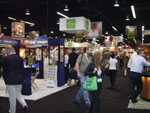 Natural Products Expo West offered all the right ingredients — excited buyers, great product positioning and an opportunity to grow your company.
Natural Products Expo West offered all the right ingredients — excited buyers, great product positioning and an opportunity to grow your company. 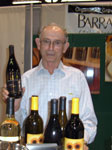 43,000 attendees and 2,600 exhibitors were in Anaheim for the Natural Products Expo West, and the show, which is growing off the charts provided information on such a variety of healthy food, beverages, health supplements, quick foods, cosmetics, aromatherapy selections, organic wines and more.
43,000 attendees and 2,600 exhibitors were in Anaheim for the Natural Products Expo West, and the show, which is growing off the charts provided information on such a variety of healthy food, beverages, health supplements, quick foods, cosmetics, aromatherapy selections, organic wines and more.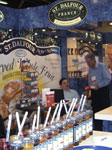 A fashion show sponsored by Think Products was held in tandem with Cedars Sinai that thrilled attendees with a variety or exciting new apparel in support of women's health. Ed Begley was there with his new healthy cleaning products, and Nell Newman was featuring some of the latest Newman's Own Organic products, including organic flavored coffees. Cliff Bars were a big player, and many new energy bars were present. Natural remedy solutions had a strong presence, including healthy ways to avoid or beat colds and flue.
A fashion show sponsored by Think Products was held in tandem with Cedars Sinai that thrilled attendees with a variety or exciting new apparel in support of women's health. Ed Begley was there with his new healthy cleaning products, and Nell Newman was featuring some of the latest Newman's Own Organic products, including organic flavored coffees. Cliff Bars were a big player, and many new energy bars were present. Natural remedy solutions had a strong presence, including healthy ways to avoid or beat colds and flue.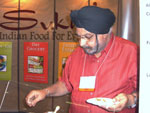
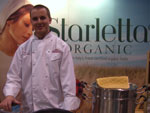
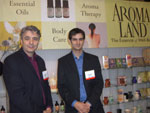
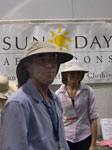 European products were many and included great new tea products from China, skin products and foods from France, and a variety of Italian oils and pasta products. My favorite group at this show include Naked Juice and Reed's Beverages; they have the best root beer and ginger ale. Tofu, Boca burgers and Thai product booths were jammed with people getting samples, and talented chefs were everywhere cooking up wonderful tastes for visitors.
European products were many and included great new tea products from China, skin products and foods from France, and a variety of Italian oils and pasta products. My favorite group at this show include Naked Juice and Reed's Beverages; they have the best root beer and ginger ale. Tofu, Boca burgers and Thai product booths were jammed with people getting samples, and talented chefs were everywhere cooking up wonderful tastes for visitors. 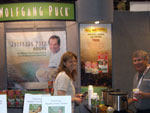
 We are all worried about premature aging, and skin cancer, and a bevy of product are out there to calm our fears when we are spending time in the sun. One of the original companies devoted to skin protection and pure product development is Kiss My Face. Today, you can find their products at just about any health store, and then some. Their green products are the life work of two vegetarians searching for healthy body care products, and over the years they have continued to add new and exciting options to their extensive line of products.
We are all worried about premature aging, and skin cancer, and a bevy of product are out there to calm our fears when we are spending time in the sun. One of the original companies devoted to skin protection and pure product development is Kiss My Face. Today, you can find their products at just about any health store, and then some. Their green products are the life work of two vegetarians searching for healthy body care products, and over the years they have continued to add new and exciting options to their extensive line of products.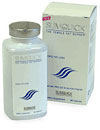 ally cannot sellect any specific product for use, but I have included a few items that seem to be very popular for your review. All can be found on the web.
ally cannot sellect any specific product for use, but I have included a few items that seem to be very popular for your review. All can be found on the web. been discussed on the Greg Berhendt Show and also Oprah.
been discussed on the Greg Berhendt Show and also Oprah.  Zone Diet At Home™ is America's most convenient food delivery service, bringing a results-oriented, unique and convenient eating experience directly to your doorstep! Whether you are interested in weight loss or improved health, Zone Diet At Home™ is a convenient and tasty way to achieve your goals.
Zone Diet At Home™ is America's most convenient food delivery service, bringing a results-oriented, unique and convenient eating experience directly to your doorstep! Whether you are interested in weight loss or improved health, Zone Diet At Home™ is a convenient and tasty way to achieve your goals. 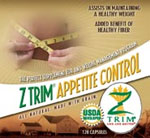 Z-Trim is another choice to assist with taking off the pounds, and comes with great food items, recipes, hints on success, and exercise recommendations. The partner products are very good tasting and provide an accompanyment to suggested diets.
Z-Trim is another choice to assist with taking off the pounds, and comes with great food items, recipes, hints on success, and exercise recommendations. The partner products are very good tasting and provide an accompanyment to suggested diets.